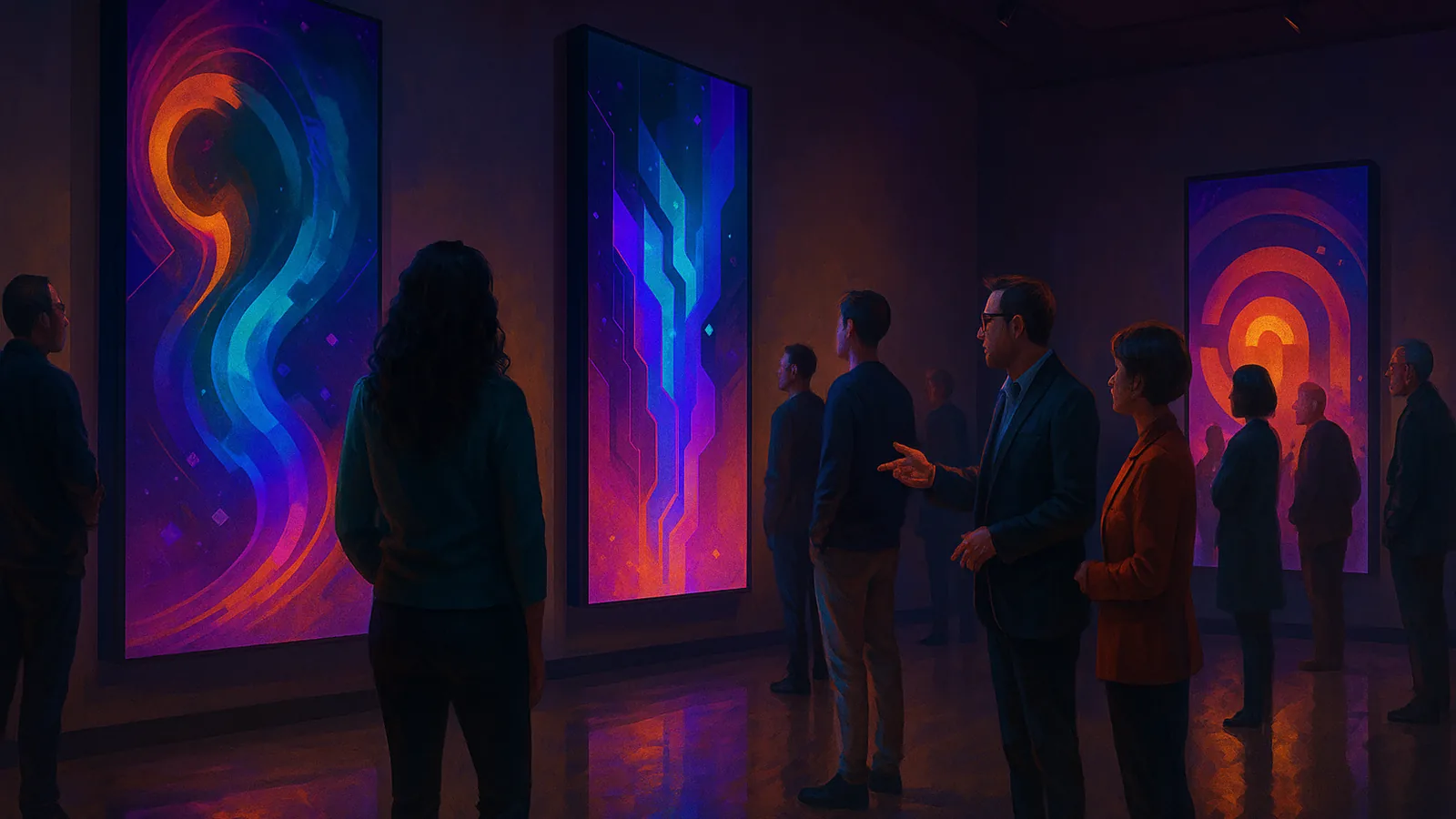NFT Art Isn’t Dead: How Curators Read Value Beyond Floor Price
Published: 20.10.2025

A small crowd hovers around a screen the way they’d hover around a painting—arms folded, heads tilted, phones out only at the end. The gallerist isn’t talking about “flipping”; she’s talking about provenance, process, and where the work lives (home frame, browser, stage visuals). It’s the same culture-first angle outlets like https://inmediate.io have tracked for years.
From JPEG to “practice”: what actually makes digital art collectible
- Medium specificity. If it could be a poster, it’s merch. If it needs motion, code, or sound, it’s native digital art.
- Provenance that tells a story. Hashes and wallets are paperwork; the value is why, where, and how.
- Edition logic. One-of-one, micro, or open—with a reason that fits the concept.
- Displayability. Home frame, stage rig, AR, browser—ship a credible plan to be seen.
- Creator practice. Studies, drops, exhibitions, conversations—rhythm beats one-offs.
Shortcut: if you can’t explain “why this, why now, why this format” in two lines, the work isn’t ready—or it’s not for you.
How curators actually evaluate a piece (a 10-minute checklist)
- Lineage: movements, teachers, peers in dialogue.
- Process: code/performance/tooling integral to concept.
- Context: exhibitions, screenings, performances.
- Edition economics: supply vs. intent; royalties that are clear and fair.
- Durability: formats, storage, playback, upgrade plan.
- Display: devices, calibration, lending notes.
- Community: cohort of artists/curators/collectors deepening the read.
- Price sanity: legible within practice and peers.
Field notes (composite, dynamics preserved)
A) The browser opera
A piece that only “works” inside a live, navigable site. The curator builds a viewing room with headsets and a pianist. Edition of 9 with a performance license—fewer screenshots, more attendance.
B) The living-room loop
Micro-editions of a silent color study sized for consumer frames—each with calibration files and a hanging guide. Resales stay modest; owner photos do the talking.
C) The broken open edition
An open edition with no context floods and fades. Fix: convert it to a study series—cap future mints, publish an essay, airdrop a museum-grade file, retire the contract.
Display is part of the artwork (treat it that way)
- Home: exact device list, color profiles, a “guest mode” that works without wallets.
- Stage: spec sheet for VJs/touring artists (resolution, fps, audio notes).
- Institutions: loan forms, install notes, tech refresh contact.
- Online: a durable viewer—no trendy libraries that break in six months.
Royalties, licenses, and reality
- Royalties are a norm, not a law—treat them like social contracts.
- Default to personal display; exhibition rights on request.
- Separate commercial sync from private use; put a plain-English license card in metadata.
- Keep price language out of arts marketing—talk about practice, care, and access.
The gallery playbook (ship this, don’t pitch it)
- Program seasons, not drops. Thematic chapters with a public calendar.
- Write the wall text first. Two lines: the idea and the medium.
- Cap the noise. Fewer channels, more scheduled conversations with a curator-grade mod.
- Package display. Every sale ships with tested display options + support contact.
- Invite peers. Pair emerging artists with established ones for show-and-tell sessions.
Metrics a curator can defend to a board
- Viewing-room attendance & dwell time, not just clicks.
- Repeat visitors across a season.
- Install success rate without support escalation.
- Follow-on exhibitions and press that reference ideas, not price.
- Institutional loans (count + quality).
- Community co-creation: essays, talks, remixes, performance uses.
A weekend pilot you can actually run (48–72 hours)
- Pick one idea and three works that need motion or code.
- Publish a 200-word curatorial note + 90-second walkthrough.
- Offer two editions each: micro (9–25) and study (48-hour open) with clear roles.
- Ship a display kit: profiles, device list, 10-minute install guide.
- Host a live 20-minute talk; record and embed.
- Follow up with owner photos, install fixes, and an addendum essay.
- Archive everything on a stable URL + PDF catalog.
Common traps (skip these)
- Merch masquerading as art—pretty isn’t enough; the medium must matter.
- Infinite editions—scarcity teaches care; care teaches value.
- Speculation copy—if your release mentions floors before ideas, start over.
- Format rot—files without preservation are liabilities, not art.
Bottom line: Curate like you’re building a small museum, not a hype machine. When you foreground medium, context, and display—and make living with the work simple—the market follows the care.